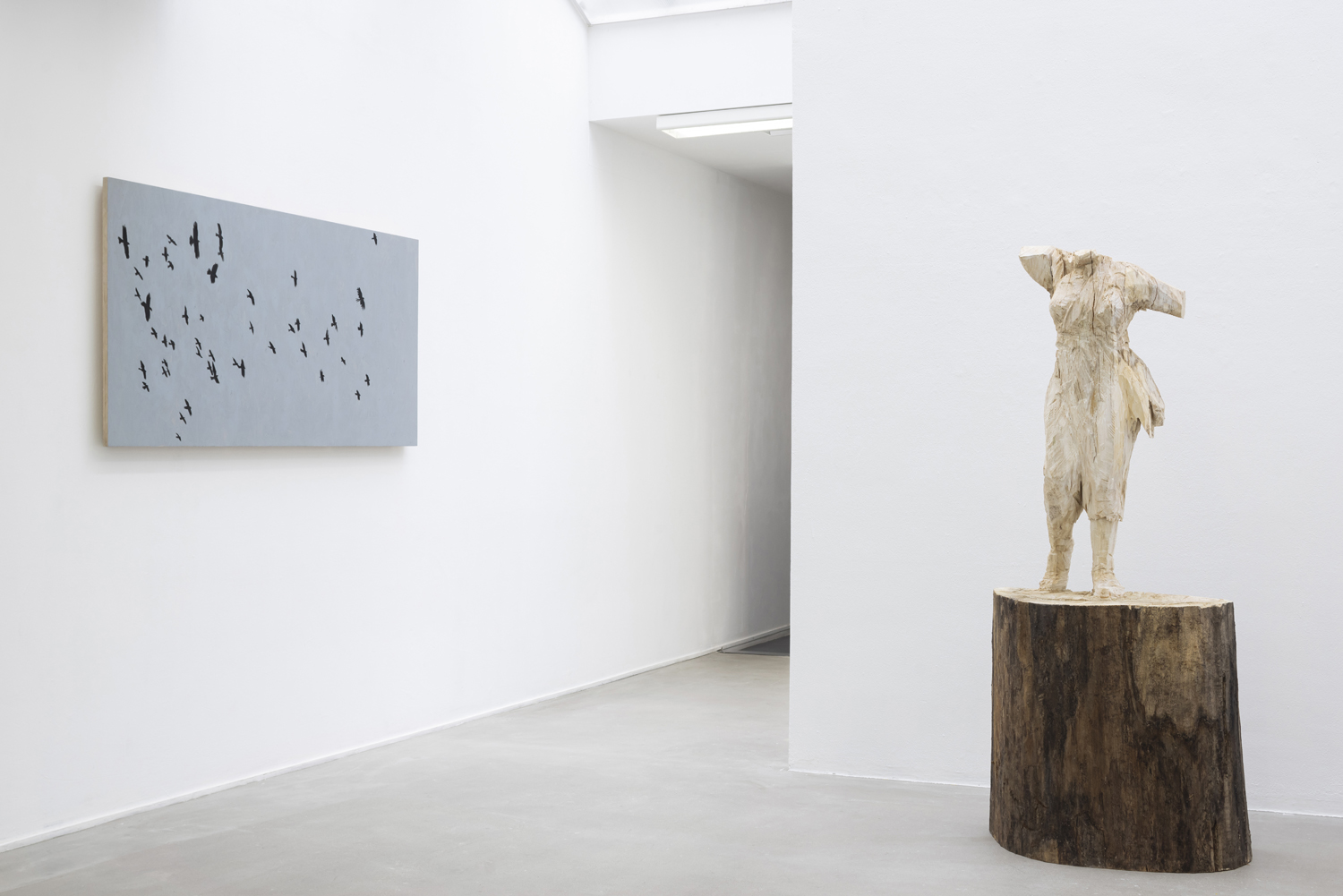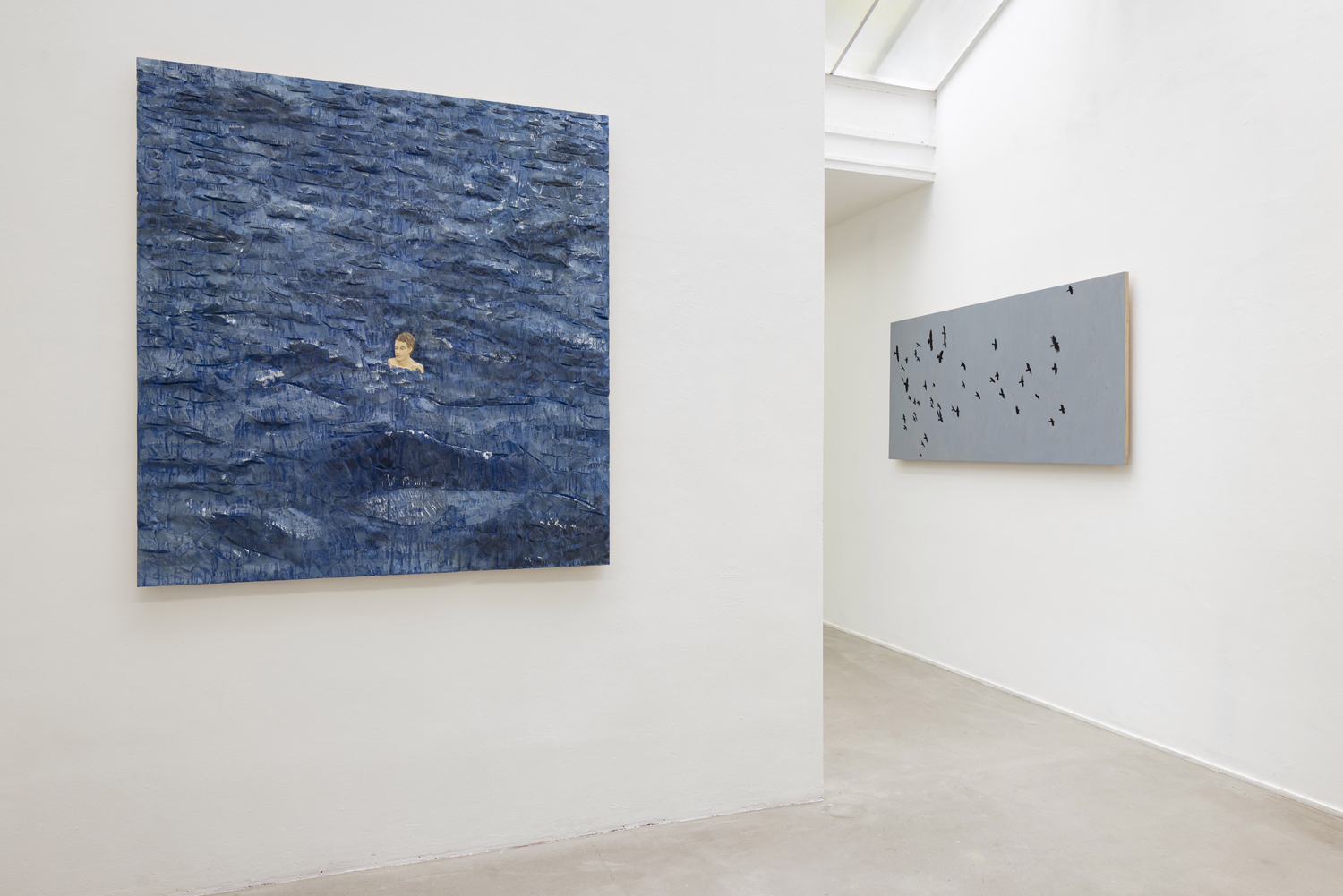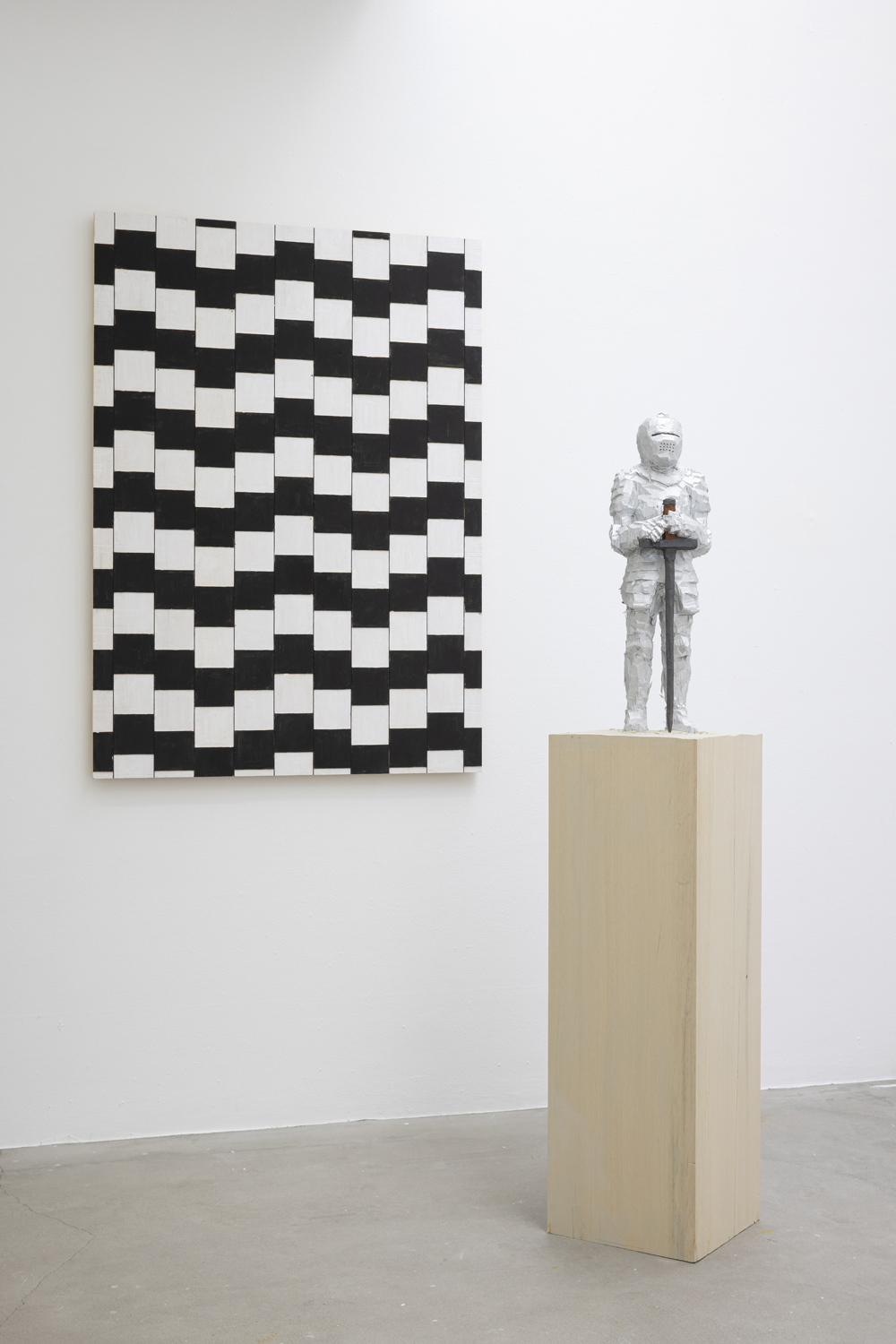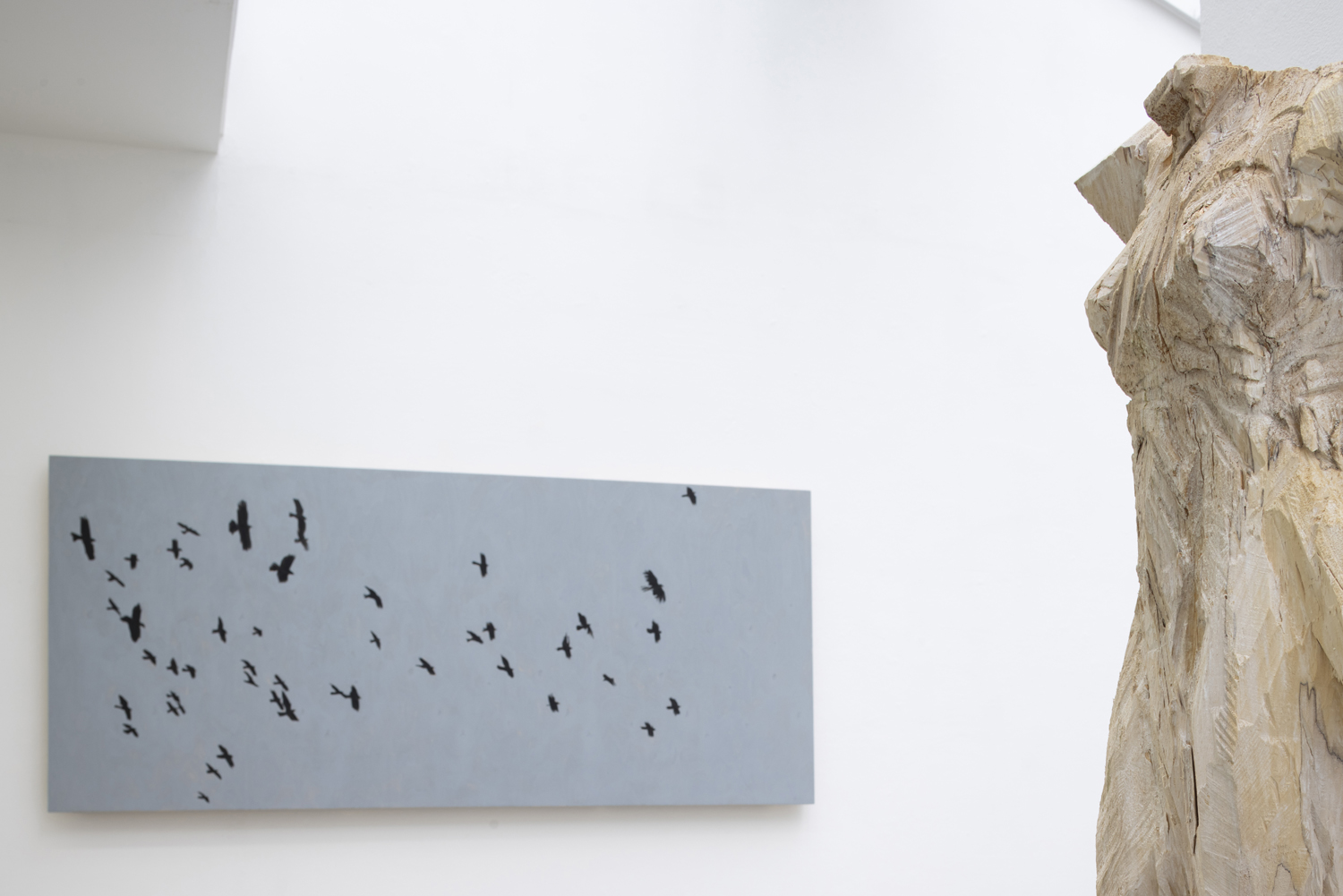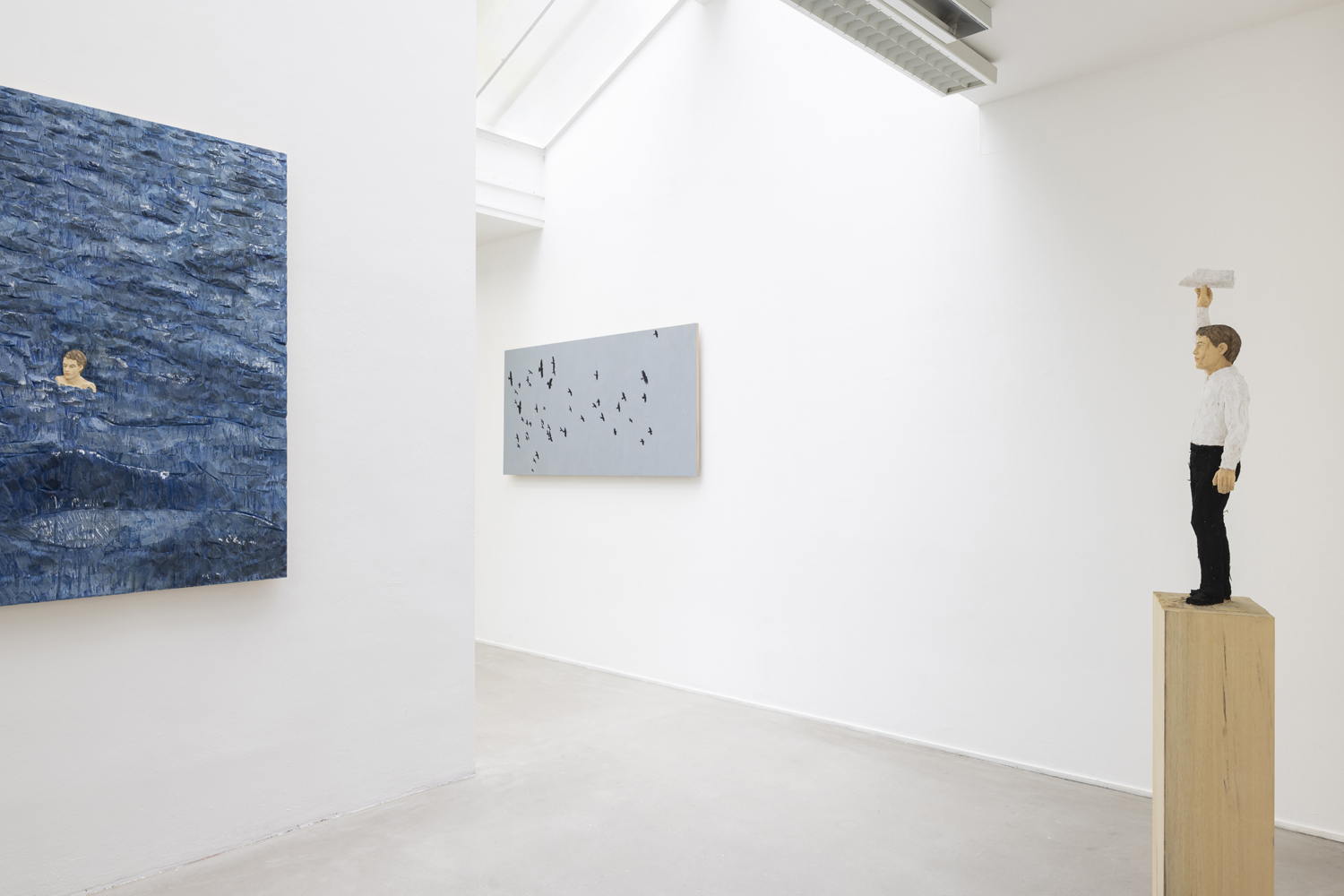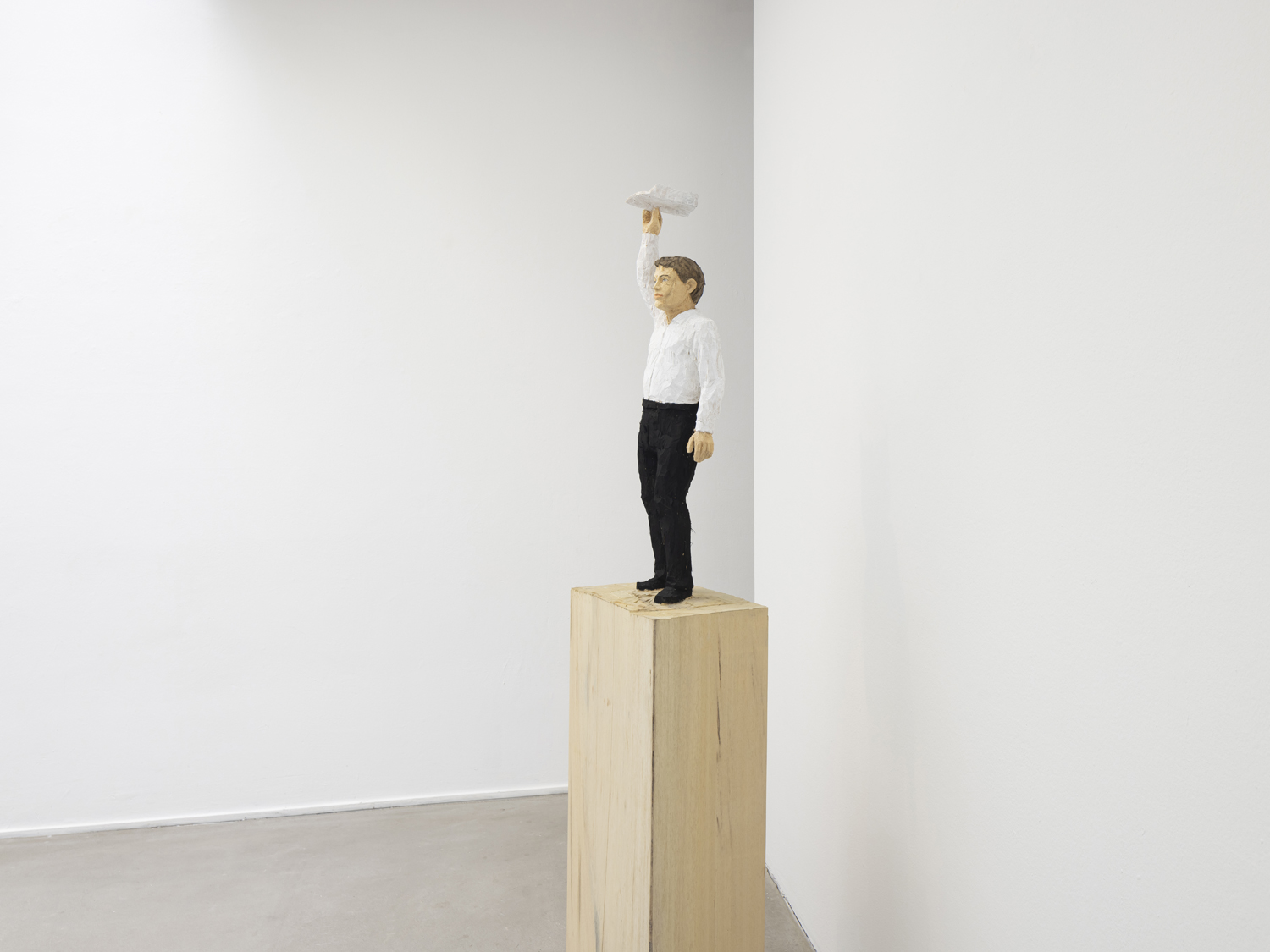With his sculptures, usually carved out of one massive block of wood, Stephan Balkenhol was among the first artists of his generation to reintroduce the figure to contemporary sculpture. With a hammer and chisel, the artist gouges his figures out of the tree trunk. He takes no effort to hide the shavings and traces of the tools visible in the wood with its knots, grain and cracks. Rather this is part of the work – an inheritance that was perhaps passed on by his minimalist teacher Ulrich Rückriem. In most aspects, however, Balkenhol did not follow the Minimalist and Conceptual trends he was exposed to as a young sculptor. Inspired by the social and political changes of the 80’s, the artist felt it was necessary to reinvent the figure “to resume an interrupted tradition”.
Lodged in the temporal and stylistic continuity that extends from ancient Egypt, through medieval polychrome wood statuary to Renaissance portraiture, Stephan Balkenhol’s much sought-after figures are archetypes, aimed directly at the onlooker, summoning up ideas about what it is to be human, instead of forcing them into a private mythology or idiosyncratic preference of the artist. In the 1990s Balkenhol added animals and hybrids, and more recently architecture to his artistic vocabulary. His practice also comprises drawings and photographs.
The consistent simplicity of Balkenhol’s sculptures, each fashioned by his own hand, without the aid of assistants and with minimal use of machines, make them all the more relevant in a fragmented and mediatised modern environment. In the mid-1980s, Balkenhol began taking on commissions for outdoor works. He installed two of his sculptures on London’s River Thames by placing one on a buoy and another near Blackfriars Bridge. There are installations at the entrance of the Hamburg Zoo; at the Städelsches Kunstinstitut in Frankfurt, in Kassel and Leipzig, Germany, at the Forum romanum in Rome, Italy and in Chicago and San Francisco, USA. In May 2018, a fountain made by Stephan Balkenhol has been unveiled as part of the project 11 fountains, in Sneek, Friesland, The Netherlands.

